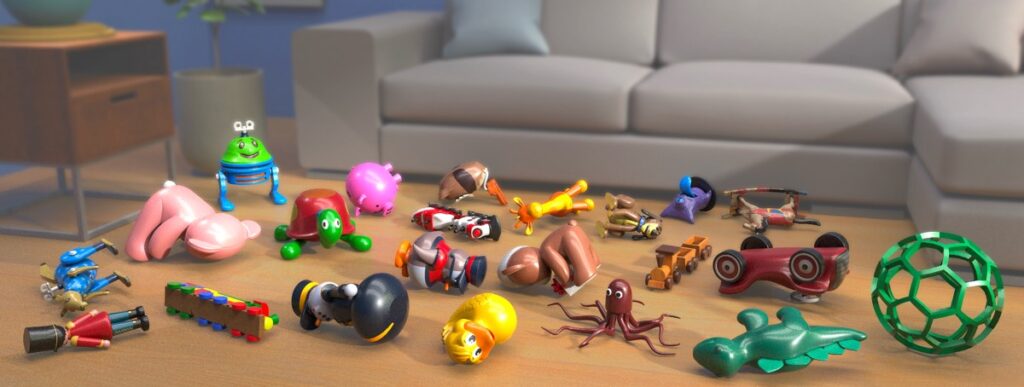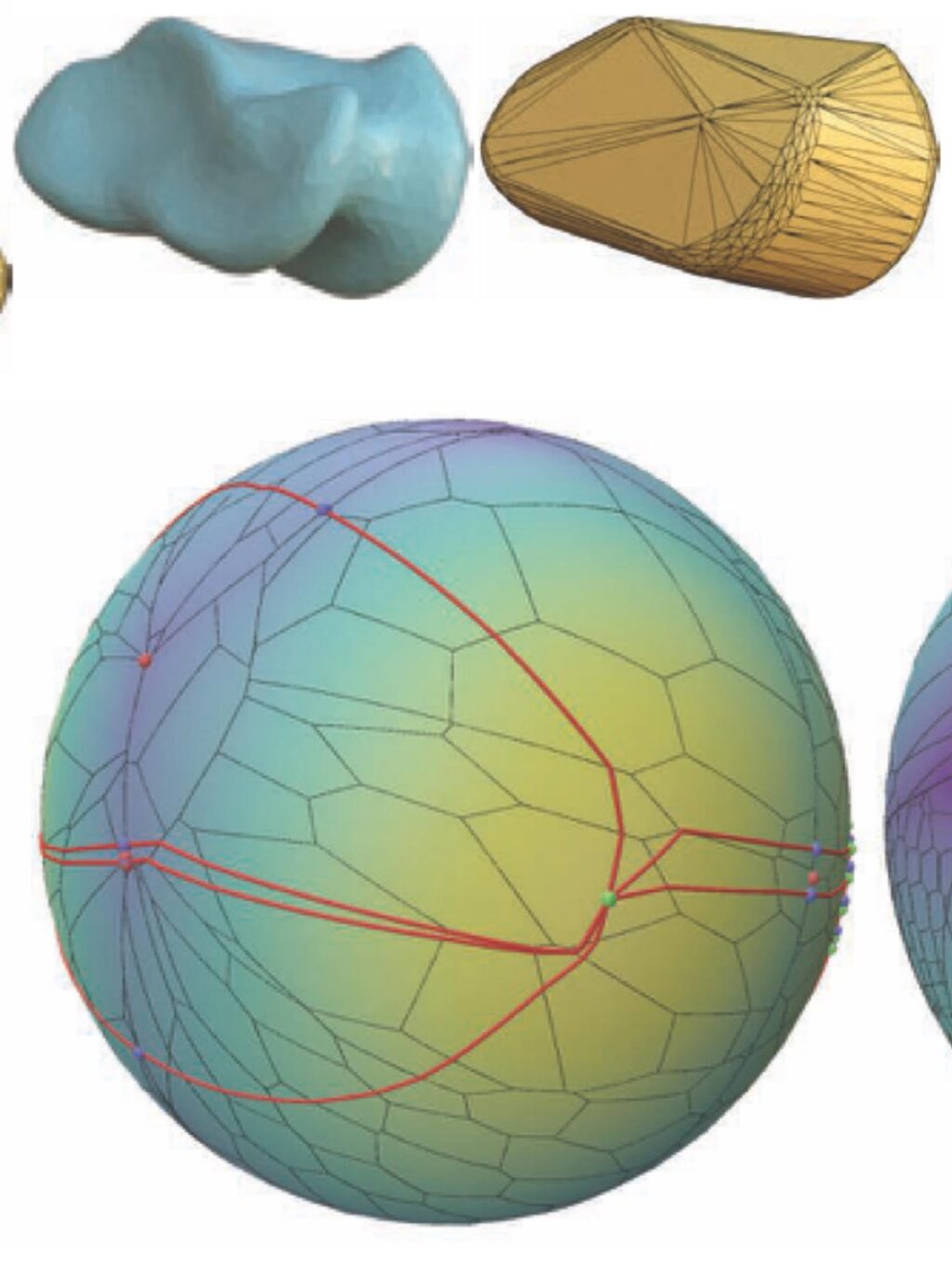
Keenan Crane
The algorithm efficiently and robustly computed the probability of all resting configurations (in 3 ms) of the pig model from the popular game Pass the Pigs.
Keenan Crane

Keenan Crane
Using the algorithm to synthesize a household scene cluttered with toys, showing the most likely resting configuration for each.
Keenan Crane

Modeling a torus-shaped design similar to ancient knucklebones.
Modeling a torus-shaped design similar to ancient knucklebones.
Using the algorithm to synthesize a household scene cluttered with toys, showing the most likely resting configuration for each.
Keenan Crane
Modeling a torus-shaped design similar to ancient knucklebones.
So one day soon, gamers might be able to choose from a wide selection of exotically shaped dice for future play—and even 3D print their own designs. (You can already 3D print the team’s designs since Baktash posted the STL files.) The new tool might also prove useful for creating natural-looking arrangements of geometry or adjusting a design so that an object is better able to stand upright, akin to the “Daruma doll,” a traditional Japanese toy that is hollow and weighted at the bottom so that it always returns to an upright position when tilted over. “Our approach makes it possible to bake this property into the geometry of the shape itself,” said Crane.
As for more “serious” applications, Crane points to underwater construction, “where the low-momentum assumption is very realistic and it’s important for things to land in the proper orientation,” he said. “Alternatively, if you imagine each little grain of sand or soil is a rigid particle, the statistics of how they land might help understand things like how soil settles and compacts. The exciting thing about putting research like this out in the world is that, a few years later, other folks inevitably find use cases for it that we never could have imagined.”
There are some inevitable tradeoffs. Oklahoma State University mathematician Henry Segerman told New Scientist that the method isn’t “necessarily a silver-bullet solution to designing weird dice, because it ignores friction, bouncing, and other real-world momentum effects. It’s more like they are—very efficiently—predicting where a die ends up if you put it down with a random orientation on a non-slip surface in low gravity. It slowly falls over and rolls down to land, without slipping or bouncing.”
Crane and his co-authors acknowledge as much in their paper. “On the one hand, [critics] are absolutely correct that our model does not make perfect predictions from the perspective of idealized geometry and physics,” said Crane. “On the other hand, if your goal is to literally make dice for tabletop games, it’s perfectly reasonable to make these kinds of approximations.”


